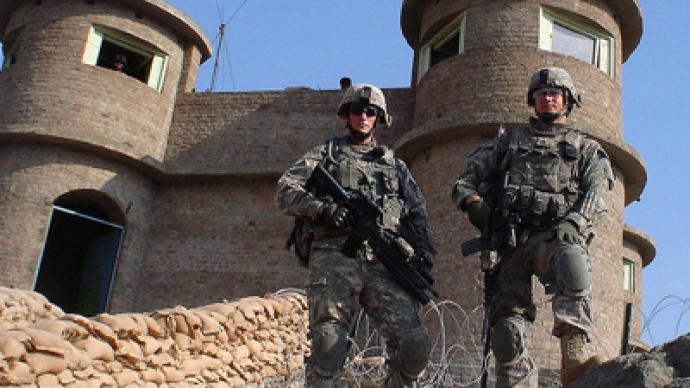Bagram: America's blackhole in Afghanistan

Since the 2001 invasion, the US government has spent over $38 billion dollars on Afghanistan to bolster security and economic development.
A significant chunk of that money has been dedicated to humanitarian aid to provide food, build health clinics and schools in one of the poorest countries in the world.It’s all part of the US effort to win over hearts and minds and to convince Afghans to reject the Taliban and al Qaeda.One American solider explained they go to a number of villages to “drop off some humanitarian aid supplies as much as we can.It gives the people the knowing that we are out here, we are the good guys.”However, there is a dark cloud looming over the battle for hearts and minds.It’s known as America’s black hole in Afghanistan.A secretive place journalists and human rights activists still depict as a liability to America’s war on terror. Former Bagram detainee Moazzam Begg has described the detention facility as a crime scene, the scene of heinous crimes. Other detainees insist it’s a place into which people simply disappeared without a trace. Two detainees were tortured to death by US forces in 2002. While the scandal exposed the use of torture to obtain information from detainees, today Bagram, renamed Parwan Detention Facility, rarely makes the news. "Bagram is still very much a black hole, it's a prison facility that is operating that we don't have very much information about, as indicated, there over 600 detainees there, many of them captured outside of Afghanistan," said Investigative Journalist Jason Leopold.Although a list of names was released last year, a federal court recently denied access to any other information pertaining to those detainees.Global outrage and condemnation over detainee abuses at America's notorious Guantanamo Bay Prison forced the US to change its practices there. But those languishing within the walls of Bagram were less lucky.Jay Alan Liotta, the director for detainee affairs and policy at the Department of Defense explained what standards for the litigation and treatment detainees receive"They do not have access to the habeas courts, because Bagram is in a war time, it's an active war zone, it would be unprecedented to have such access," he said. The original Bagram detention facility may have been renamed and relocated, but it will take more than a fresh coat of paint to erase the fear Afghans associate with the prison.Reports of a prison within a prison persist with Afghan President Hamid Karzai recently demanding greater Afghan insight into the prison’s affairs and greater legal recourse for its detainees.Which is why human rights advocates insist the billions of dollars in humanitarian aid sent to Afghanistan does little to buff and shine an image of America that has been badly tarnished by places like Bagram. "A lot of the aid and human right policies are inconsistent and I think it's a problem for the government,” said Viviana Krsticevic, director of the human rights group CEJIL. Mixing humanitarian aid with contentious US policies and detention practices relay a different reality on the ground."Hypocrisy is what it is," concluded LeopoldThere is ongoing conflict in Afghanistan and the Obama administration initially announced plans for a withdrawal or reduction in troops by 2011. Later, it was learned government contractors and State Department workers would be replacing military units.Michael O'Brien, the author of "America's Failure in Iraq" and a former US Department of Defense contractor in Iraq said everything is changing, and the blame falls on Obama and his policies.The war is getting bigger; the fight is growing and becoming more deadly. “This is the deadliest year of the War in Afghanistan since we initially went over there after 9/11 and a lot of it has to do with Obama’s policies,” said O’Brien. Gen. Stanley McChrystal asked Obama for around 70,000 troops, however Obama opted to send 30,000 a few months later, explained O’Brien. The administration is in trouble in Afghanistan.The White House is now heading toward withdrawing troops sometime in 2014, no details on when in 2014. O’Brien said he hoped a premature or poorly planned withdrawal would not lead to Al Qaeda simply waiting until the troops are gone and then reigniting conflict."The problem is there is no clear direction and goal and objective of our national leadership. When you fight a war, when you send American soldiers into battle you’ve to have a clear goal and objective so the American people know what’s going on,” said O’Brien. The US should have sent in an “overwhelming force to get the job done quickly and decisively. We have an obligation to do that.”












